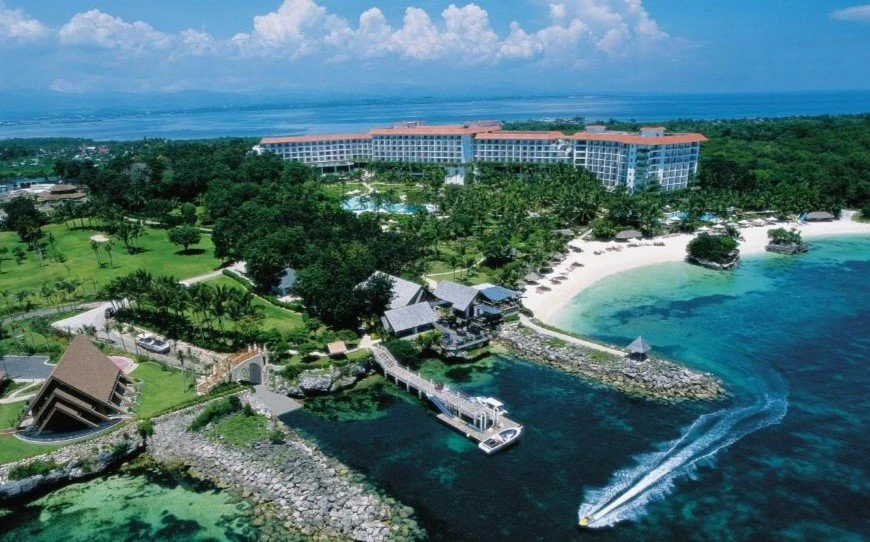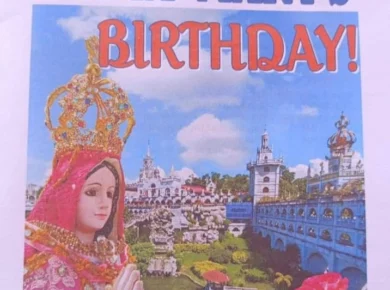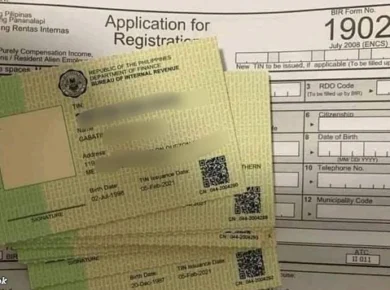Table of Contents
As a traveler searching for cultural experiences in the Philippines, a visit to the Basilica del Santo Niño should top your list. This historic church in Cebu City provides an immersive look at the country’s Spanish colonial past and Catholic devotion. With the annual Sinulog festival celebrating Santo Niño’s role in the area’s history, you can plan your 2024 trip around lively cultural celebrations.
This travel guide shares tips to make the most of your Basilica del Santo Niño visit, including an efficient 2-day itinerary, budgeting advice, and recommendations on when to go during the year for the best experience!
History and Significance of the Basilica del Santo Niño
![Travel Guide to Basilica del Santo Niño: Itinerary and Budget [2024] Basilica](https://hellocebuph.com/wp-content/uploads/2024/04/Basilica-1024x576.webp)
![Travel Guide to Basilica del Santo Niño: Itinerary and Budget [2024] Basilica Minore del Santo Nino de Cebu 2018](https://hellocebuph.com/wp-content/uploads/2024/04/Basilica-Minore-del-Santo-Nino-de-Cebu-2018-1024x756.webp)
The oldest Roman Catholic Church in the Philippines
![Travel Guide to Basilica del Santo Niño: Itinerary and Budget [2024] The San Agustin Church now Basilica Minore del Santo Nino](https://hellocebuph.com/wp-content/uploads/2024/04/The-San-Agustin-Church-now-Basilica-Minore-del-Santo-Nino.webp)
The Basilica del Santo Niño is the oldest Roman Catholic church in the Philippines. It was founded in 1565 by Spanish explorers, and the structure we see today was completed in 1740. Within its walls lies the oldest religious relic in the country—the statue of the Santo Niño de Cebu.
Home of the Oldest Religious Relic
![Travel Guide to Basilica del Santo Niño: Itinerary and Budget [2024] The Statue of the Santo Nino de Cebu](https://hellocebuph.com/wp-content/uploads/2024/04/The-Statue-of-the-Santo-Nino-de-Cebu.webp)
The Basilica is home to the oldest religious relic in the Philippines—the statue of the Santo Niño de Cebu. The statue was gifted by Ferdinand Magellan to Rajah Humabon’s wife, Hara Amihan, as a baptismal gift in 1521. The statue has been housed in the basilica since its construction.
Pilgrimage Site
![Travel Guide to Basilica del Santo Niño: Itinerary and Budget [2024] 1st Day of Novena Mass](http://hellocebuph.com/wp-content/uploads/2024/04/1st-Day-of-Novena-Mass-1024x683.webp)
Today, the Basilica del Santo Niño is an important cultural landmark and pilgrimage site. Devotees from all over flock to the basilica to pay respect to the Santo Niño, especially during the annual Sinulog Festival. The festival features colorful street dances, extravagant floats, and vibrant costumes as a tribute to the child Jesus.
Whether you’re a pilgrim or a tourist, a visit to the historic Basilica del Santo Niño is a must. Marvel at its architectural wonder, soak in its cultural significance and be moved by the faith and devotion of its pilgrims. The basilica has stood for centuries as a symbol of Christianity in the Philippines.
Visiting the Basilica del Santo Niño: What to See and Do
The Minor Basilica of the Holy Child
![Travel Guide to Basilica del Santo Niño: Itinerary and Budget [2024] The Minor Basilica of the Holy Child 1](https://hellocebuph.com/wp-content/uploads/2024/04/The-Minor-Basilica-of-the-Holy-Child-1.webp)
When visiting the Basilica del Santo Niño, you must see the Minor Basilica, the oldest Roman Catholic church in the Philippines. Built in 1565, this historic church houses the image of the Santo Niño, given as a gift by Ferdinand Magellan to the wife of Rajah Humabon upon her baptism.
Basilica Minore del Santo Niño Museum
![Travel Guide to Basilica del Santo Niño: Itinerary and Budget [2024] Basilica Minore del Santo Nino Museum](http://hellocebuph.com/wp-content/uploads/2024/04/Basilica-Minore-del-Santo-Nino-Museum-1024x683.webp)
Next to the Minor Basilica is a museum dedicated to the Holy Child. It showcases many historical artifacts, as well as replicas of the Santo Niño from different regions of the Philippines. The museum is open Tuesdays to Sundays from 8 AM to 12 PM and 1 PM to 5 PM. The admission fee is P30 for adults and P15 for students.
Pilgrimage Walk
![Travel Guide to Basilica del Santo Niño: Itinerary and Budget [2024] sinulog walk with jesus](https://hellocebuph.com/wp-content/uploads/2024/04/sinulog-walk-with-jesus-1024x682.webp)
Every year during the Sinulog Festival, devotees do a pilgrimage walk from Fuente Osmeña to the Basilica Minore del Santo Niño. The 9-kilometer walk, also known as the “Walk with Jesus,” is done barefoot while praying the rosary. Even if you visit outside of the Sinulog season, you can still do your pilgrimage walk to honor the Santo Niño.
Attend Mass
![Travel Guide to Basilica del Santo Niño: Itinerary and Budget [2024] Mass in Basilica del Santo Nino](https://hellocebuph.com/wp-content/uploads/2024/04/Mass-in-Basilica-del-Santo-Nino.webp)
The Minor Basilica holds masses every day. Attending a mass is the best way to experience the solemnity and holiness of the church. Masses on Sundays and holidays tend to be very crowded, so I would recommend going on a weekday. Make sure to arrive early to get a good seat.
With its historical and religious significance, the Basilica del Santo Niño is a must-see when in Cebu City. Take your time exploring the many treasures within this historic complex. Your devotion to the Holy Child will surely be deepened.
Basilica Del Santo Niño Travel Tips: Getting There, Hours, Dress Code, and More
Getting There
To get to the Basilica del Santo Niño, you have a few options. If you’re staying in downtown Cebu City, the church is only a 10- to 15-minute walk away. You can also take a cab or jeepney; just tell the driver you want to go to the basilica. Another option is to take the MyBus tour, which stops at many of the major attractions in Cebu, including the Basilica.
If you’re coming from the Mactan airport to Basilica del Santo Niño, it’s a approximately 30-40 minutes ride, depending on traffic conditions. Here’s the route you want to take:
- From Mactan-Cebu International Airport, head southwest on Airport Access Rd toward M.L. Quezon National Hwy.
- Continue straight onto M.L. Quezon National Hwy.
- Use the left lane to merge onto Marcelo Fernan Bridge/Cebu–Cordova Link Expressway.
- Continue on Cebu–Cordova Link Expressway. Take Sergio Osmeña Jr Blvd to Osmena Blvd in Cebu City.
- Merge onto Sergio Osmeña Jr Blvd.
- Continue onto Sergio Osmeña Blvd.
- Turn right onto D. Jakosalem St.
- Turn left onto P. Burgos St.
- Turn right onto Osmena Blvd.
- Basilica del Santo Niño will be on the left.
Hours
The basilica is open every day of the week from 4:30 a.m. to 9 p.m. However, the best time to visit is on Sundays, when many masses and festivities are going on. The Sinulog Festival in January is also a wonderful time to experience the Basilica at its liveliest.
Dress Code
As with any place of worship, modest and respectful attire is required. For women, avoid short skirts and shorts, sleeveless tops, and low necklines. For men, avoid shorts, sleeveless shirts, and flip-flops. If you are not properly dressed, you may be denied entry into the basilica.
Other Tips
- No photography or videography is allowed inside the church during Mass or any religious ceremonies.
- Be quiet and avoid loud talking while inside the church.
- Do not touch any artifacts or statues without permission.
- There are souvenir shops on the church grounds where you can buy religious items, native crafts, and snacks.
- The courtyard in front of the church is also a nice place to sit, watch, and soak in the atmosphere.
Following these tips will ensure you have a meaningful visit to this historic church. Enjoy your trip, and may the Santo Niño bless you!
FAQs about the Basilica del Santo Niño
When is the best time to visit?
The best time to visit the Basilica del Santo Niño is during the Sinulog Festival, held every third Sunday of January. During the festival, you’ll witness colorful parades, lively music, and street dancing in honor of Señor Santo Niño. If crowds aren’t your thing, weekdays and Sundays are good alternatives when there are fewer visitors.
How much is the entrance fee?
Entering the Basilica del Santo Niño church and museum is free of charge. However, a small donation is appreciated.
What should I wear?
As a house of worship, the basilica requires modest and conservative clothing:
For women: knee-length skirts or pants; shoulder-covering tops
For men: pants or knee-length shorts, collared shirts
Take note that shorts, sleeveless tops, and slippers are not allowed inside the church. It is best to bring a scarf or jacket to cover bare arms and legs.
What can I see inside?
The Basilica del Santo Niño houses many historical relics and artifacts. Here are some you can find inside:
1. The original Santo Niño de Cebu image was given by Ferdinand Magellan in 1521.
2. Paintings depicting the arrival of the Spanish conquistadors.
3. Gold and silver artifacts, as well as jewel-encrusted robes used for dressing the Santo Niño image.
4. The basilica’s architectural details, like the red brick facade, twin spires, and stained glass windows.
5. A small museum displaying religious artifacts, vestments, and other colonial-era relics.
What else is nearby?
Within walking distance of the basilica are other attractions, like:
1. Magellan’s Cross, where Ferdinand Magellan planted a cross upon arriving in Cebu.
2. Fort San Pedro is the oldest Spanish fort in the Philippines.
3. Casa Gorordo Museum, a colonial house museum depicting life in the 19th century.
4. Cebu Metropolitan Cathedral, the ecclesiastical seat of the Archdiocese of Cebu.
Visiting these nearby attractions can easily make for a full day of exploring Cebu’s rich history and culture. Take your time and immerse yourself in the Queen City of the South!
What is the exact location of Basilica del Santo Niño?
Basilica del Santo Niño is located in Pilgrim’s Center, Osmeña Blvd, Cebu City, 6000 Cebu. It sits within the confines of a city block, surrounded by Osmeña Boulevard, D. Jakosalem St, P. Burgos St, and Plaza Sugbo, home to Magellan’s Cross.
Conclusion
After immersing yourself in the vibrant culture of the Basilica del Santo Niño, you’ll come away with a deeper understanding of Cebu’s rich history and traditions. From the awe-inspiring architecture to the solemn masses, this minor basilica provides a window into the local Catholic faith.
Don’t forget to check out the museum, shop for souvenirs, and take lots of photos. With proper planning and budgeting, your pilgrimage here will create memories to last a lifetime. The welcoming spirit of the Cebuanos will stay with you long after you return home! Daghang salamat!
![Travel Guide to Basilica del Santo Niño: Itinerary and Budget [2024] Basilica Minore del Santo Nino de Cebu 2018](https://hellocebuph.com/wp-content/uploads/2024/04/Basilica-Minore-del-Santo-Nino-de-Cebu-2018-820x606.webp)


![Travel Guide to Simala Church: Itinerary and Budget [2024] simala church image by Jane Jumaoas](https://hellocebuph.com/wp-content/uploads/2024/02/simala-church-image-by-Jane-Jumaoas-390x290.webp)
![Simala Mass Schedule 2025 [Official Schedule] Monastery of the Holy Eucharist by Mary Loren Capas](https://hellocebuph.com/wp-content/uploads/2025/01/Monastery-of-the-Holy-Eucharist-by-Mary-Loren-Capas-390x290.webp)



![List of NBI Branches and Satellites in Cebu, Philippines [Updated Contact Information in 2024] nbi satellite office mandaue](https://hellocebuph.com/wp-content/uploads/2024/04/nbi-satellite-office-mandaue-390x290.webp)
1 comment